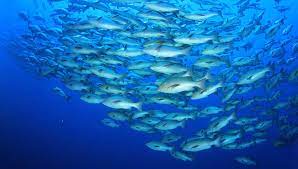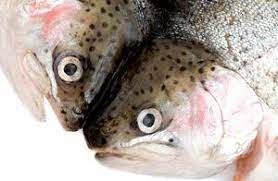According to the American Fisheries Society (AFS) Policy Statement, the impacts of chemical substances on the aquatic environment are many and as diverse as the number of beneficial purposes for which these chemicals were initially created.
The spread of manufacturing, consumer use, and distribution patterns for this myriad of chemical substances has become so general that there remains essentially no natural surface water communities currently untouched at least to some degree by man-made chemical substances.
Measurable residues of persistent organics have been reported from fish and aquatic mammals from all corners of the earth, obviously thousands of miles from any known use or application site of these organics.
Frequently, the concentration of a particular toxic substance is sufficiently high so as to leave no doubt about its negative impact on aquatic life. However, it is much more common to encounter lower concentrations of a particular chemical with no obvious or immediate effects but with far- reaching and potentially more significant secondary effects on aquatic communities and consumer species.
Read Also : Hazardous Substances and Human Health
The contamination of a river with heavy metals may cause devastating effects on the ecological balance of the aquatic environment, and the diversity of aquatic organisms becomes limited with the extent of contamination. Heavy metals released into aquatic systems are generally bound to particulate matter, which eventually settle down and become incorporated into sediments.
Surface sediment, therefore, is the most important reservoir or sink of metals and other pollutants in aquatic environments (Singh and Kalamdhad, 2011). Because a major fraction of the chemicals introduced into the aquatic environment eventually becomes associated with the bottom sediments, environmental degradation by hazardous substances can occur in areas where water quality criteria are not exceeded, with organisms in or near the sediments being adversely affected.
All manufactured chemical substances possess the potential to enter surface waters sometimes with and sometimes without man‟s specific intent. The volume introduced into surface water through improper handling of hazardous wastes and toxic substances is what is important for the preservation of water quality and aquatic life. In order to bring about reduction in the distribution or abundance of specific aquatic life, these toxic substances need not be present in acutely toxic concentrations.
Species reduction can be caused by significantly lower concentrations of the chemical, which either directly or indirectly affect survival, growth, reproduction or behavior of the species.
The well-known example of the bio-concentration of chlorinated organic pesticides, resulting in the deaths of millions of sport and forage fish species in the lower Mississippi River during the early 1960‟s demonstrated that hazardous wastes and organic chemical could cause significant impacts on aquatic life in areas far removed from their discharge point if all aspects of manufacture, use, and disposal were not carefully considered.

Diatom community structure can be affected by high levels of micro-pollutants and, in particular, by metals, which are often found in rivers (Singh and Kalamdhad, 2011).
Results of numerous monitoring and survey programmes show that most surface waters of the world, especially in highly industrialized countries, and many ground water sources contain measurable amounts of potentially harmful chemical substances.
Once heavy metals are accumulated by an aquatic organism, they can be transferred through the upper classes of the food chain. Carnivores at the top of the food chain, including humans, obtain most of their heavy metal burden from the aquatic ecosystem by way of food.
Fish is a commodity of potential public health concern as it can be contaminated with a range of environmentally persistent chemicals from hazardous wastes. These exposures have typically resulted in direct and indirect toxic impacts on aquatic biota or in more subtle effects such as rendering these resources inedible for human consumption.
Surface water pollution by heavy metals is widespread and, in some instances, has caused significant human health problems due to bio-concentration of metals by fish and shellfish used as human food resources.
A popular example involves the classic Japanese „Minamata disease‟ associated with human consumption of fish and shellfish laden with high concentrations of methylmercury. Sublethal concentrations of pesticides can alter fish physiology, behaviour, learning and ability to escape natural predation.
Similarly, trace concentrations of mercury, zinc, and other metals reduce the swimming rate of crab and fish larvae, thus reducing their ability to escape predation. Another example given by the American Fisheries Society relates to trout mortalities in the late 1950‟s, where it was shown that concentrations of DDT could cause fry mortalities via transmittal of DDT from female lake trout to their offspring through the egg.
Read Also : Water and Wastewater Management Complete Guide
More recently, large sections of the James River estuary in Chesapeake Bay in the United States have been closed for the taking of fish and shellfish due to manufacturing discharges and subsequent bio-concentration of the pesticide ketone.

